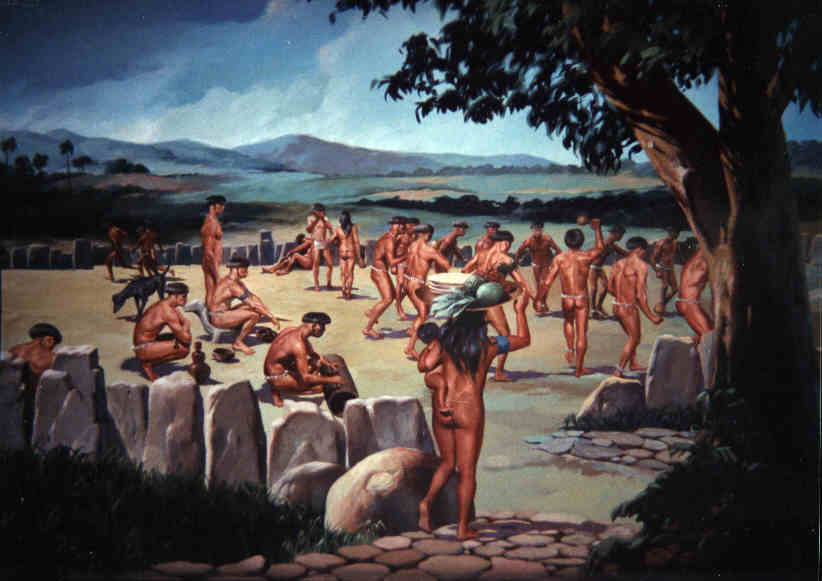1- The Theater of the Cuban Aborigines around the year 1492.

The theater of Cuba’s indigenous people was implicit in the religious-magical ceremony known as areito, in which we find the first Cuban theatrical performances. Therefore, areito was the form of performance carried out by our natives and also constitutes our initial cultural expression.
As in all cultures, Cuban aboriginal theater was part of a ritual through which events were recounted; its celebration involved various forms of performance, such as dance, song, and mime.
The accounts of the conquistadors, known as Chroniclers of the Indies, are what have allowed us to understand the little we know today about these early Cuban inhabitants and their culture, and about their artistic expressions.
According to the information provided by the Chronicles of the Indies, we can learn today about the ceremonies where dance, music and the first Cuban theatrical performances appeared: “Thus we find them to pray for military victory or war dances; the funeral ones, to ask for the happiness of the dead; the nuptial ones, praying for the happiness of the spouses, those of gratitude for good harvests and those of prayer to ask for rain, good hunting, abundance of harvested fruits or other benefits of nature, among which are the ceremony of yucca and corn.”1
Cuban aboriginal theater, based on oral tradition, was a primary means of narrating the tribe’s exploits, achievements, and events, thus passing them on from generation to generation, even to the knowledge of neighboring clans.
1 Luis Alfaro Salazar and Antonio J. Vargas. Prehistory of Venezuela, page 210. http://www.monografias.com/trabajos17/musica-danza-aborigenes/musica-danza-aborigenes.shtml








